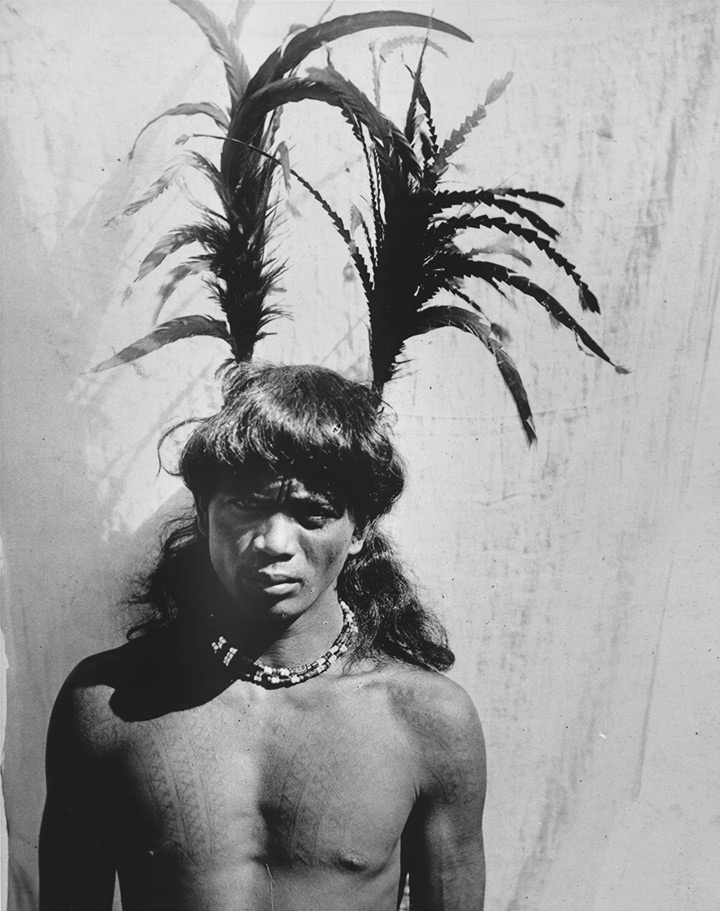
Antonio, Chief of the Igorrotes, in war dress
Photographed by Jesse Tarbox Beals
Of the numerous photographers vying to make a name for themselves at the 1904 Louisiana Purchase Exposition, few were as successful at creating a visual record of the Fair as Jessie Tarbox Beals (1870-1942). Armed with an 8 x 10 camera, Beals often stood on a 20 foot step ladder in an ankle-length skirt to compose her shots. She was awarded a gold medal by the Exposition for her aerial photography after going up in a hot air balloon. Drawn to the exotic individuals in the Fair’s anthropological villages, Beals treated her subjects with dignity rather than curiosities.
1/15
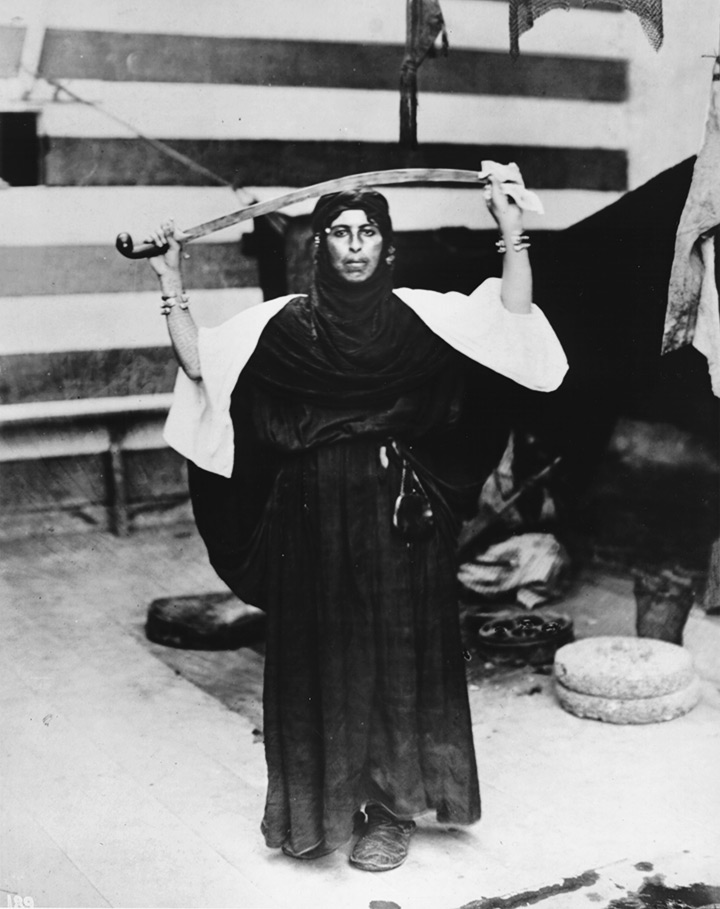
Bedouin woman
Photographed by Jesse Tarbox Beals
A Bedouin woman, dressed in native costume, holds a scimitar above her head while performing a sword dance.
2/15
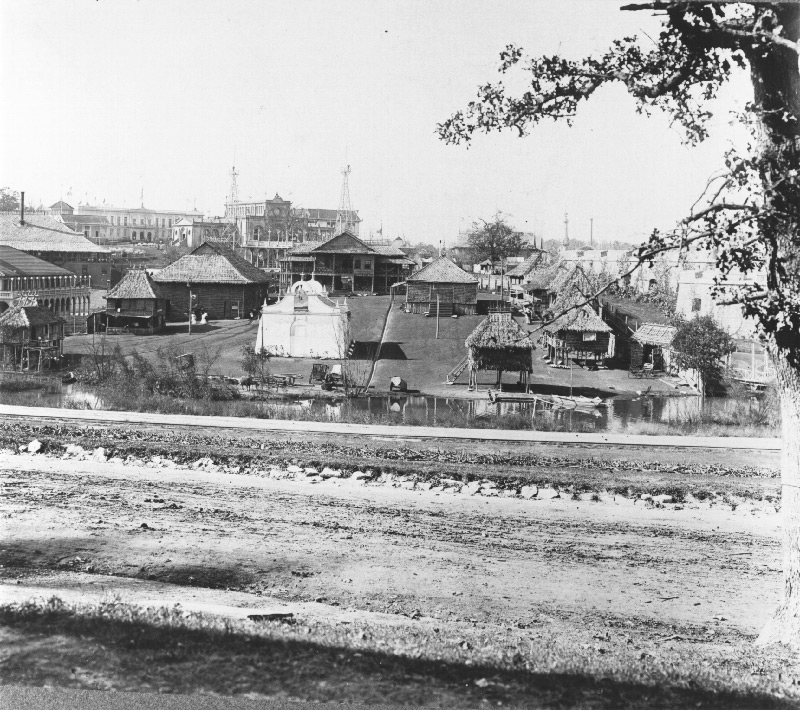
Visayan area, 1904 World’s Fair
Photographed by Jesse Tarbox Beals
View of the Visayan area of the Philippine reservation from across Arrowhead Lake taken by Beals. Nearly 1200 Filipinos lived in villages on a forty-seven acre site at the west end of the Louisiana Purchase Exposition.
3/15

U.S. Mail Clerks parade, 1904 World’s Fair
In this Keystone View Company stereograph card from the Fair, Beals can be seen photographing the U.S. Mail Clerks parade from atop her step ladder.
4/15
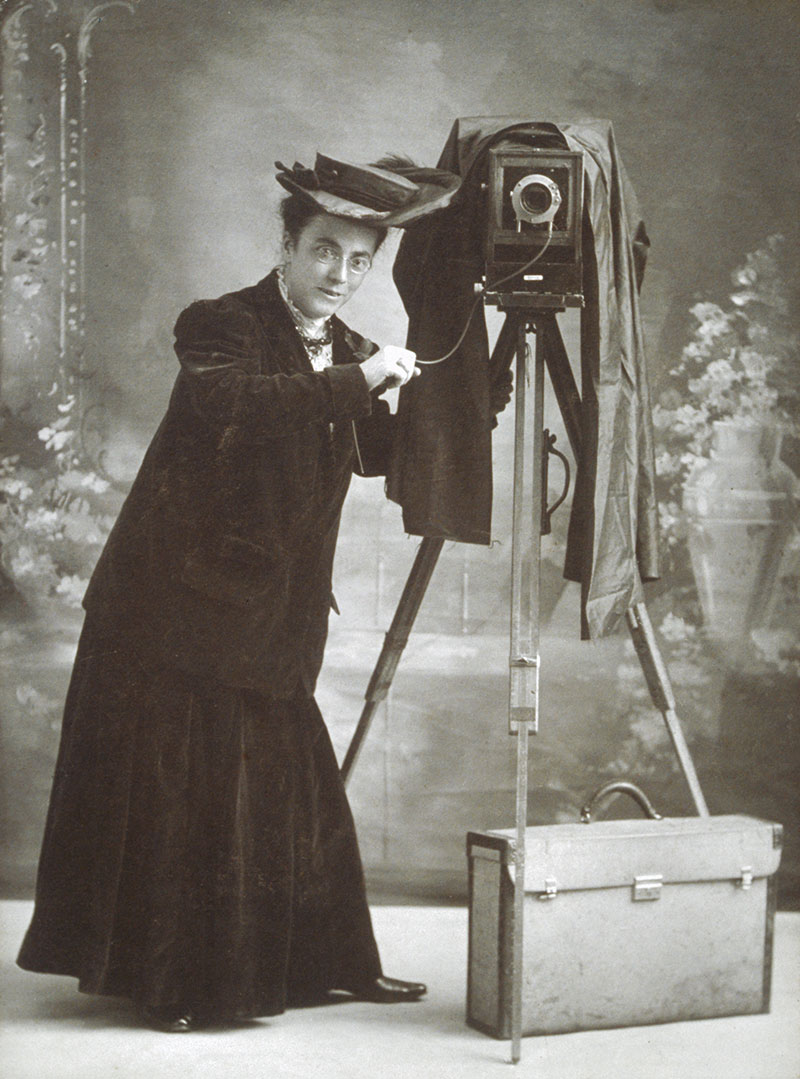
Portrait of Jesse Tarbox Beals
Image courtesy of Schlesinger Library on the History of Women in America, Radcliffe Institute, Harvard University
Born in Hamilton, Ontario, on December 23, 1870. While working as a schoolteacher in Massachusetts, Beals earned an inexpensive camera for selling a magazine subscription. Taken with the medium, she became a working photographer by 1900, with her husband Alfred assisting in the darkroom. Settling in Buffalo, New York, it is her newspaper work for the Buffalo Inquirer and the Courier that earned her the status of first American woman photojournalist. The unconventional Beals was also the first official woman photographer at the 1904 Louisiana Purchase Exposition.
5/15
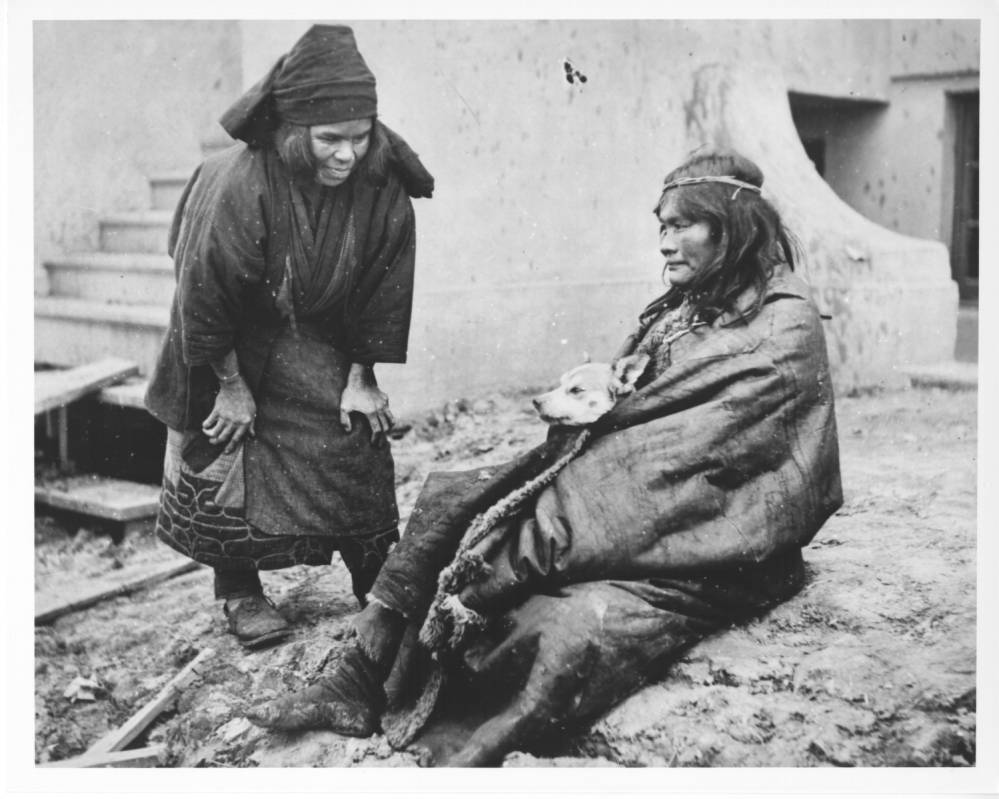
Ainu and Patagonian women becoming acquainted
An Ainu woman approaches a seated Patagonian woman, Lorenza, holding her dog Kak within her cloak. Two different women: Imagine what this was like. An Ainu woman from Japan meets a Patagonian woman from Argentina. The Ainu believe that hair growth is a sign of grace. The Patagonians are horsemen. What could these two have in common? How do they communicate?
6/15
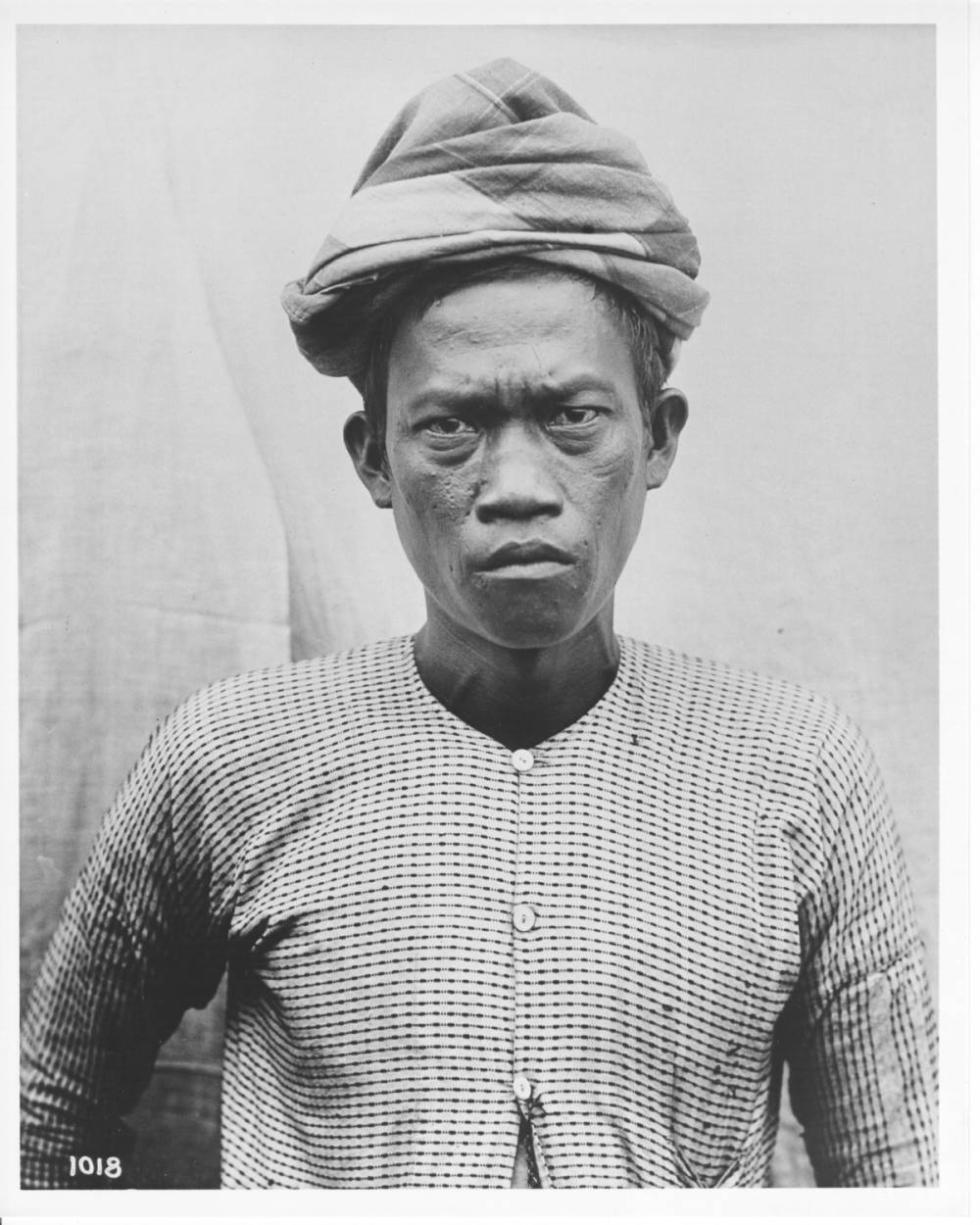
Anget, a Moro
Portrait photograph of a Moro man. Number 1018: The number ‘1018’ is written at the lower left-hand corner of the photograph.
7/15

Aro Moy, a China girl
Aro Moy, a young Chinese girl in traditional dress, poses in front of a building in the Chinese Village on the Pike. Chinese children played a role in the Chinese exhibits. Some would sing, while others would dance. Other children would play musical instruments.
8/15
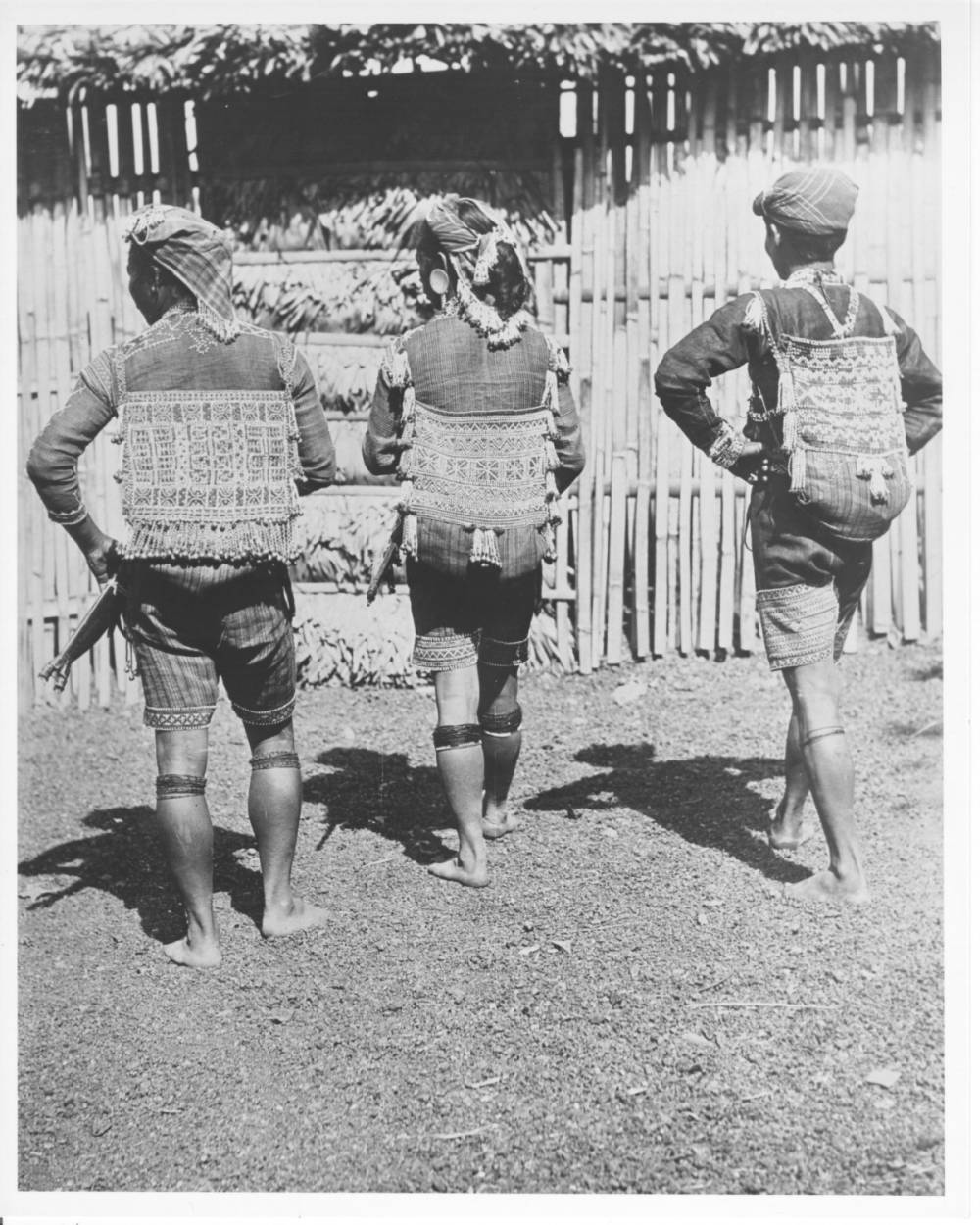
Bagobo hunting bags
Three Bagobo men in traditional dress turn their backs to the camera to show elaborately-beaded hunting bags.
9/15
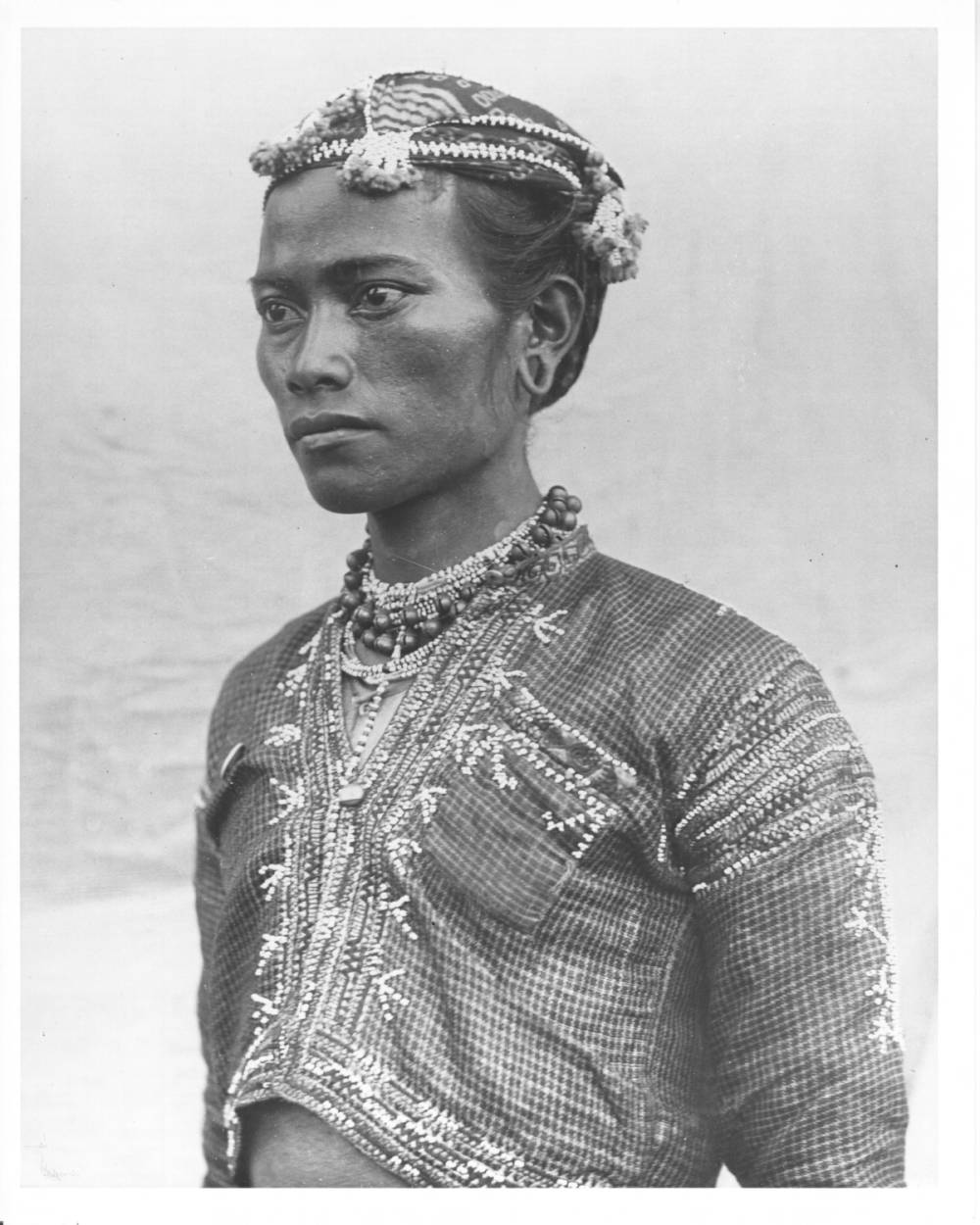
Bagobo head hunter
Portrait photograph of Bagobo man in traditional dress. Headhunter: Head hunting is the Bagabos highest pursuit. The tribe rates men by the number of heads they get. Their knives are 20 inches long. Number 940: The number ‘940’ is written at the lower left-hand corner of the photograph.
10/15
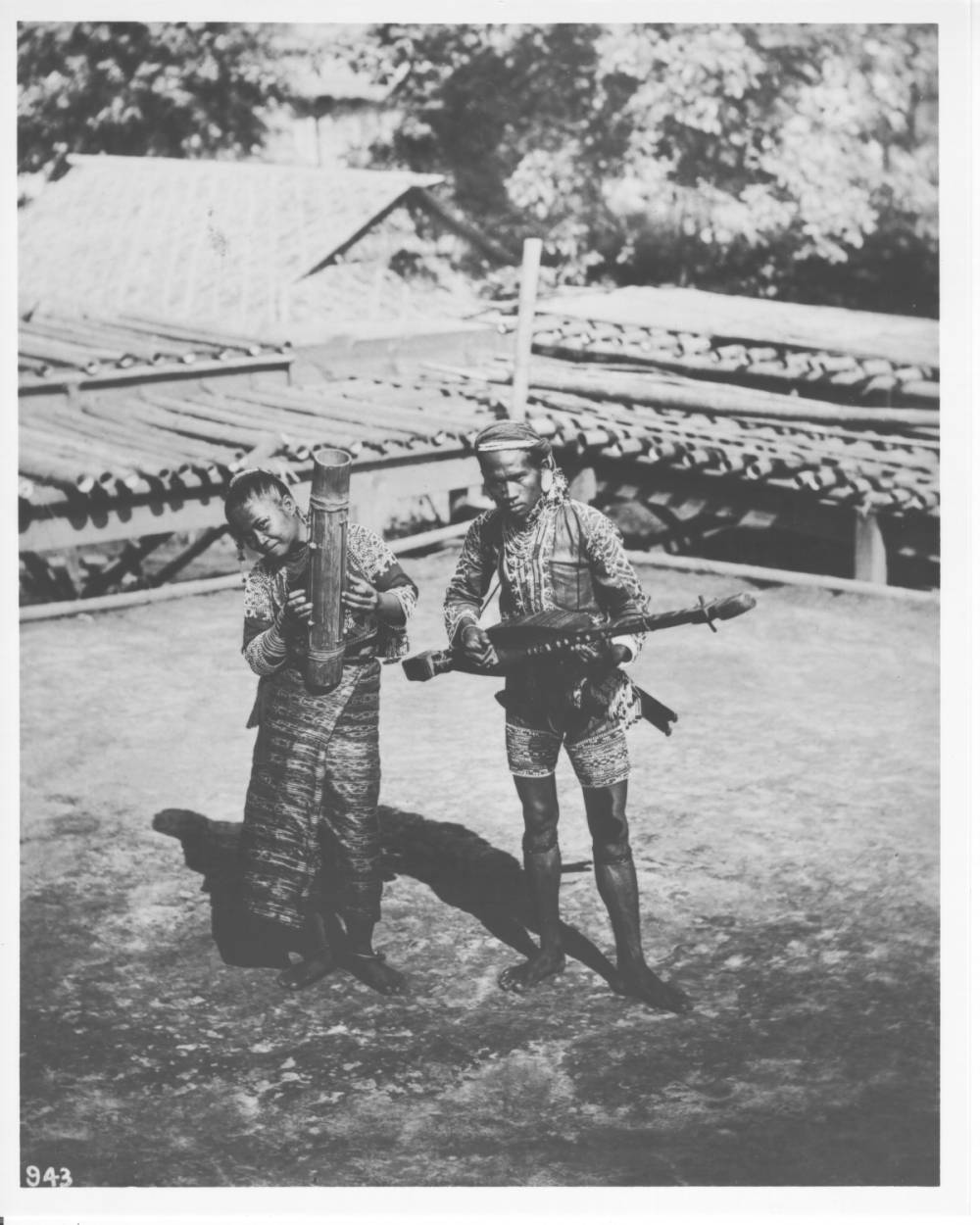
Bagobo music
A young Bagobo woman and a young man in traditional dress play stringed musical instruments. Number 943: Number ‘943’ written at the lower left-hand corner of the photograph.
11/15
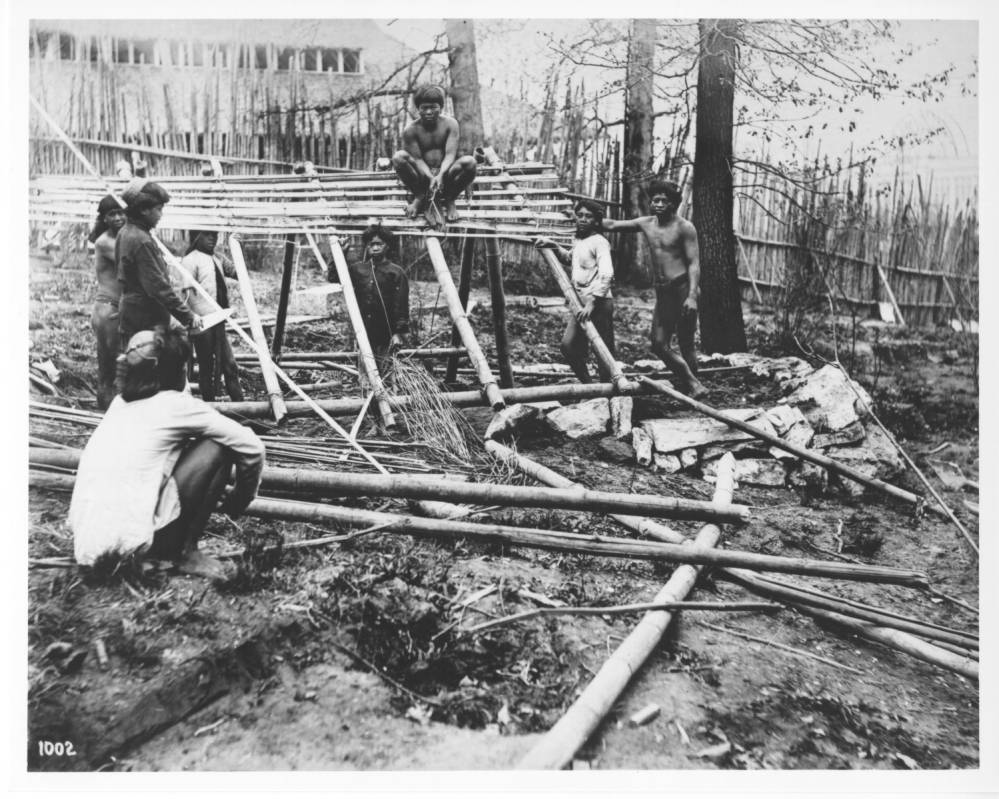
Building a long house
Construction of the Philippine Village: Filipino carpenters arrived in St. Louis in October 1903 to begin constructing the Philippine Village at the Louisiana Purchase Exposition. The Village consisted of nearly one hundred buildings on about 47 acres of ground in present-day Clayton, Missouri. Number 1002: The number ‘1002’ is written at the lower left-hand corner of the photograph.
12/15
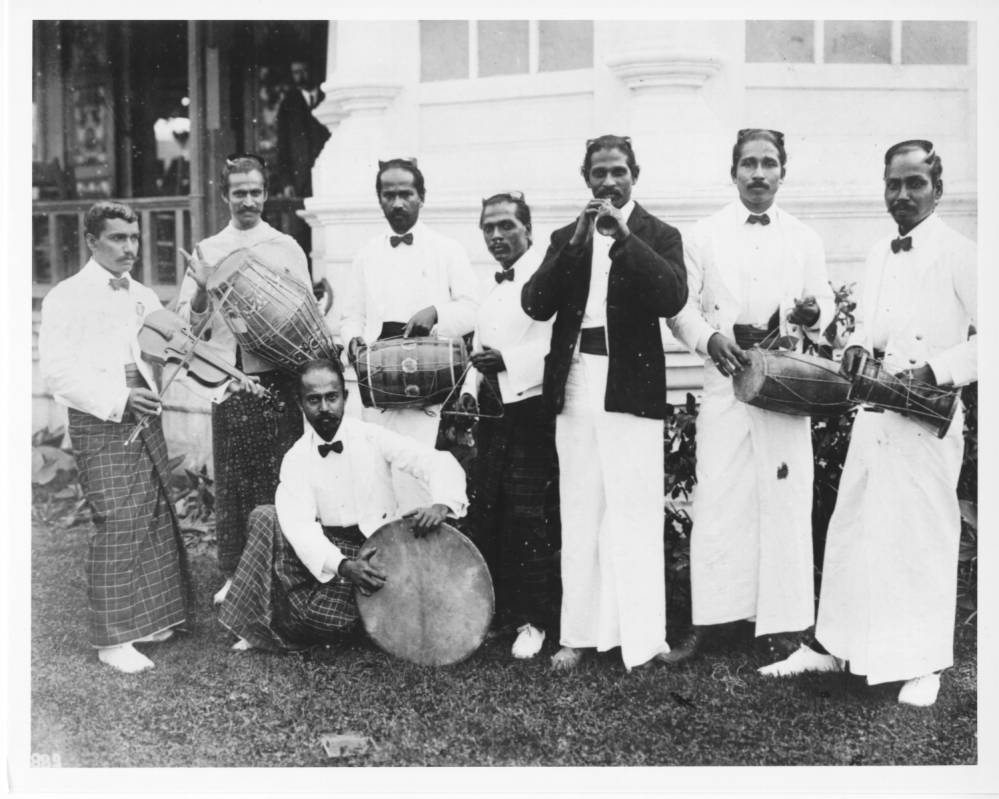
Cingalese musicians
The Sinhalese musicians, along with Sinhalese dancers, performed in the Mysterious Asia concession on the Pike. Number 889: The number ‘889’ is written at the lower left-hand corner of the photograph.
13/15
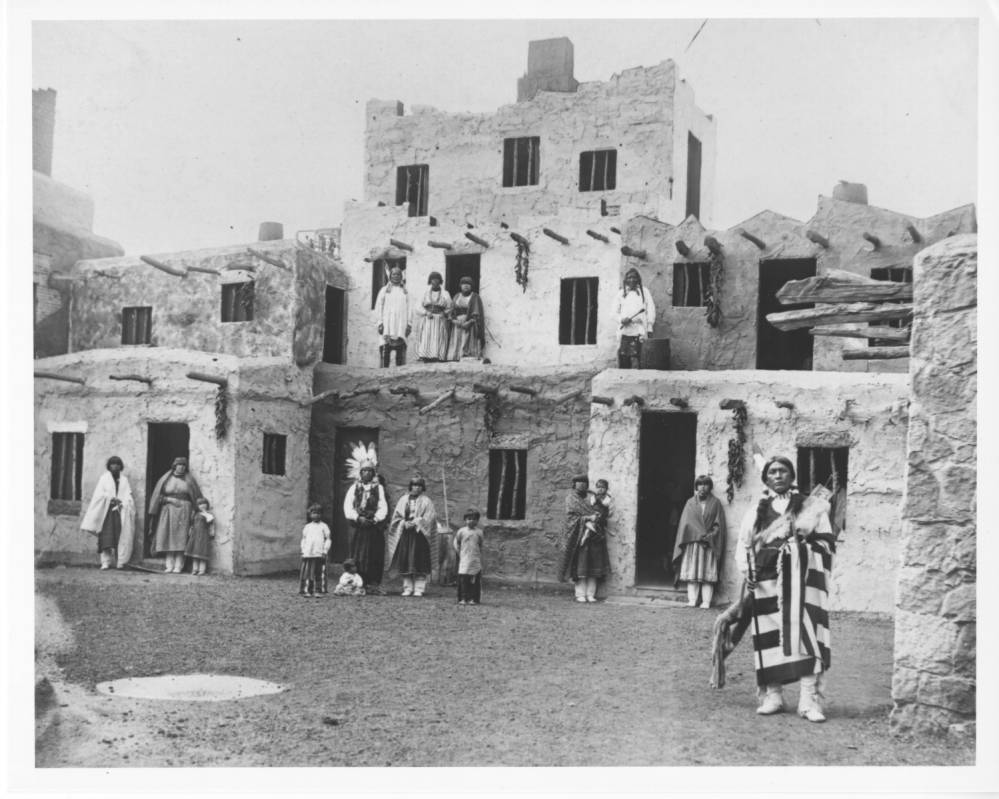
Cliff dwellers' houses
The band of Moqui, Zuni and Pueblo cliff dwellers at the Louisiana Purchase Exposition was headed by their chief, Governor Ramos Archuleta, who in some photographs is seen holding the cane given to him in 1863 by President Abraham Lincoln and a silver medal presented to one of his ancestors in 1837 by President Martin Van Buren. Number 900: Number ‘900’ written in left-hand corner of photograph. Pueblo building at 1904 World’s Fair: Native American men, women and children stand around a pueblo building at the Louisiana Purchase Exposition. Some are standing on the roof. The man in the foreground holds a cane.
14/15
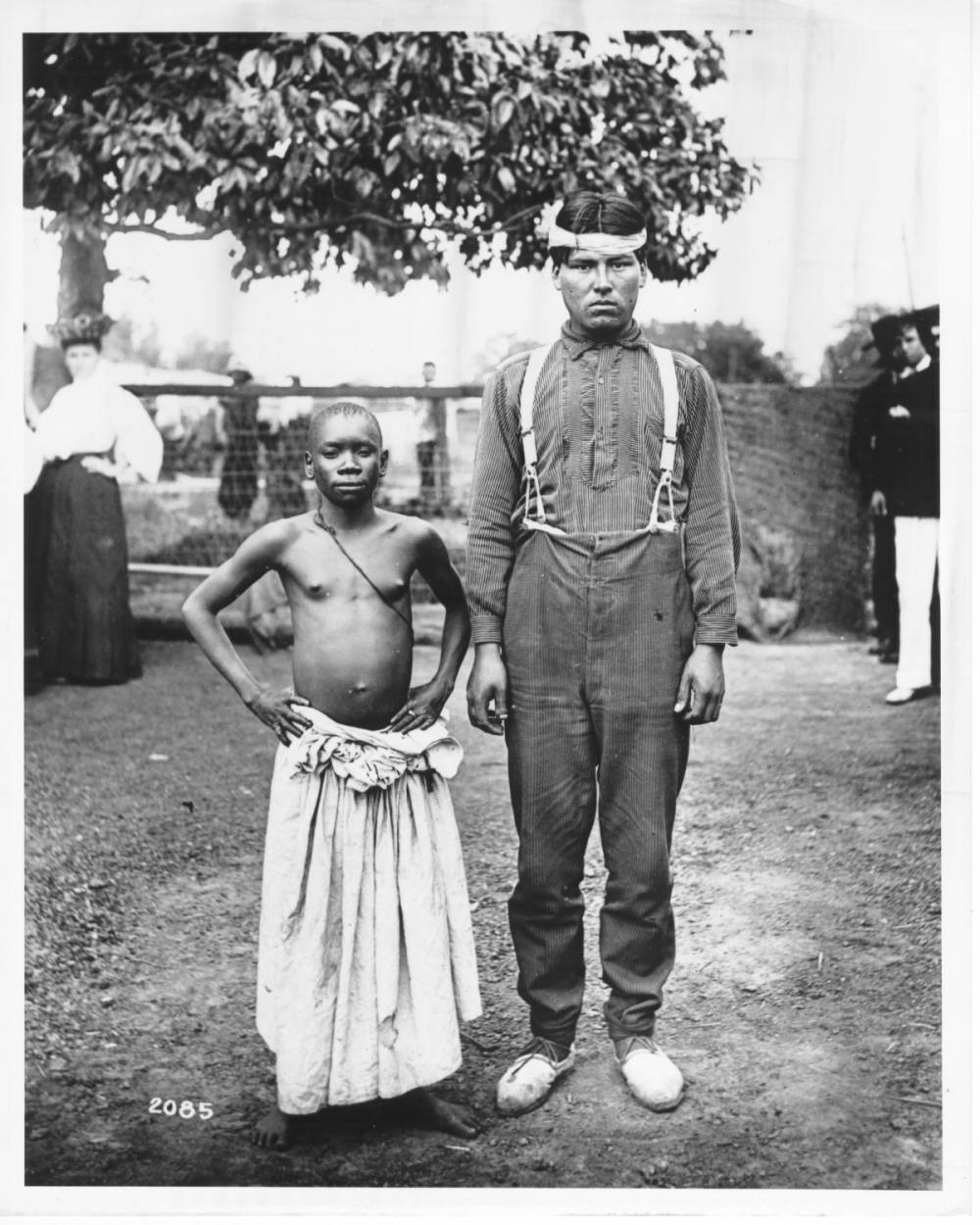
Comparison between Pygmy, 25 years old and Patagonian, 16 years old
Most sources contemporary to the Louisiana Purchase Exposition identified the men brought from the Congo Free State for the fair as pygmies, although the Africans came from a number of ethnic groups. Heights compared: The photograph shows the African man, at about four and a half feet, standing next to the Patagonian Indian, at about six feet. Number 2085: Number ‘2085’ written in left-hand corner of photograph.
15/15
